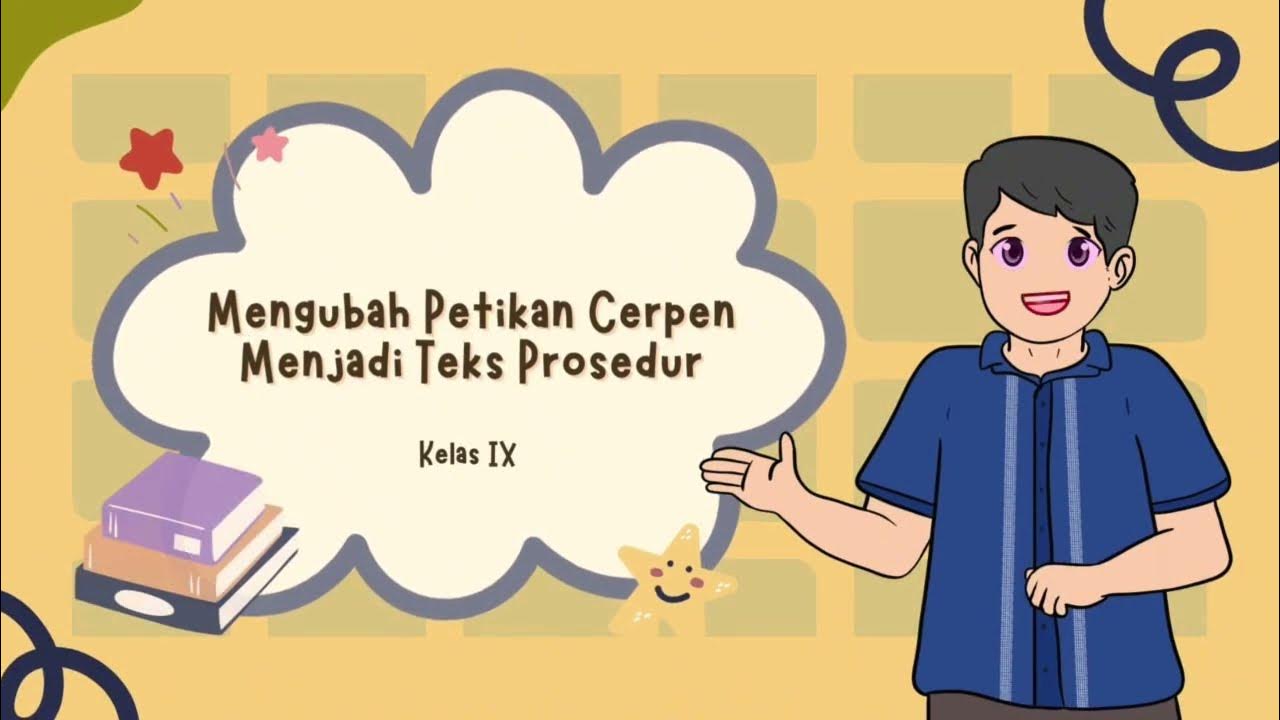How to understand Procedure Text - Mr. D
Summary
TLDRThis video provides an introduction to procedural texts, focusing on their structure and purpose. It explains that procedural texts are designed to give instructions on how to do something or make something, with examples like recipes and DIY guides. The video covers the essential components, such as the title, list of materials, and series of steps. It also highlights key vocabulary and phrases used in procedural texts, emphasizing the importance of clear, step-by-step instructions. The presenter engages with the audience through exercises and encourages viewers to seek further help through social media if needed.
Takeaways
- 😀 Procedure text is a type of text that provides instructions on how to make or do something.
- 😀 The purpose of a procedure text is to give clear instructions or explain the steps involved in performing a task.
- 😀 Common examples of procedure texts include recipes, manuals, and guides for crafting or other activities.
- 😀 A procedure text consists of three main components: a title, a list of materials or ingredients, and a series of steps.
- 😀 Vocabulary in procedure texts often includes verbs with objects, such as 'slice', 'boil', or 'cut'.
- 😀 Procedure texts use a specific set of transition words such as 'first', 'second', 'next', 'finally', and 'before'.
- 😀 The structure of a procedure text typically starts with the title, followed by a list of materials, and ends with a sequence of steps.
- 😀 The step-by-step process in a procedure text needs to be clear and logically ordered for easy following.
- 😀 Vocabulary used in procedure texts is action-oriented and focused on precise instructions, often using the imperative mood.
- 😀 The lesson encourages students to practice procedure text writing and invites them to seek help on social media platforms if they have difficulties with English.
Q & A
What is a procedure text?
-A procedure text is a type of text that provides instructions on how to make or do something. It outlines the steps required to accomplish a task or explains a process.
What is the main purpose of a procedure text?
-The main purpose of a procedure text is to give instructions on how to perform a task or to explain the steps involved in making something.
What are the common types of procedure texts?
-Common types of procedure texts include recipes (How to make something), manuals, instructions, and tips for tasks or activities.
What are the key components of a procedure text?
-The key components of a procedure text include the title, a list of materials (if applicable), and a series of steps or instructions.
What role does vocabulary play in a procedure text?
-Vocabulary in a procedure text is essential for providing clear instructions. It includes action verbs (e.g., slice, boil, mix) and specific terms related to the task being described.
Can you give an example of vocabulary used in a procedure text?
-Examples of vocabulary in a procedure text include verbs such as 'slice,' 'boil,' 'put,' and 'cook.' These verbs are typically followed by objects, such as 'slice the mushroom' or 'boil the water.'
What are some common time-related terms used in procedure texts?
-Common time-related terms in procedure texts include 'first,' 'next,' 'before,' 'during,' 'finally,' and 'at the end.' These terms help organize the steps in a logical sequence.
How do you identify the key steps in a procedure text?
-Key steps in a procedure text can usually be identified by looking for action verbs that indicate what should be done, as well as any specific instructions or conditions (e.g., 'before you put the mango').
What is the significance of the 'list of materials' in a procedure text?
-The 'list of materials' section in a procedure text provides a clear inventory of the items needed to complete the task or process. This helps readers ensure they have everything required before starting.
How can you apply the understanding of procedure texts in real life?
-Understanding procedure texts can be applied in everyday life when following recipes, assembling products, or performing activities that require specific steps, such as cooking, crafting, or repairing items.
Outlines

This section is available to paid users only. Please upgrade to access this part.
Upgrade NowMindmap

This section is available to paid users only. Please upgrade to access this part.
Upgrade NowKeywords

This section is available to paid users only. Please upgrade to access this part.
Upgrade NowHighlights

This section is available to paid users only. Please upgrade to access this part.
Upgrade NowTranscripts

This section is available to paid users only. Please upgrade to access this part.
Upgrade NowBrowse More Related Video

Teks Prosedur kelas 11 SMA ~ Materi Bahasa Indonesia

Teks Prosedur | Bahasa Indonesia SD

BAHASA INGGRIS Kelas 11 - Procedure Text | GIA Academy

Unit 5 AKM

MENGENAL TEKS PROSEDUR | Video Belajar Bahasa Indonesia Kelas 11 IPS

Mengubah Petikan Cerpen Menjadi Teks Prosedur | Video Kreatif | Nobel Rajendra Riyanto
5.0 / 5 (0 votes)